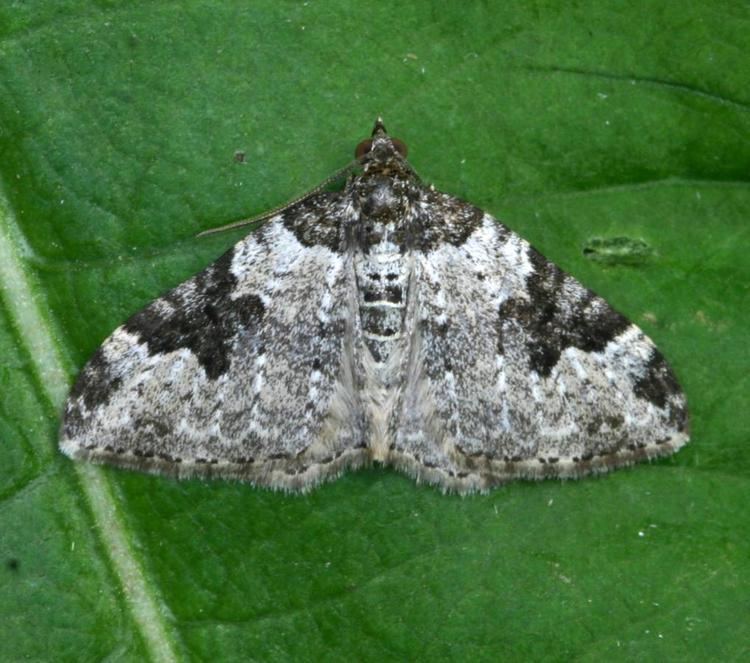Family Geometridae | Genus Xanthorhoe Rank Species | |
 | ||
Similar Xanthorhoe, Common carpet, Common marbled carpet, Xanthorhoe ferrugata, Riband wave | ||
The garden carpet (Xanthorhoe fluctuata) is a moth of the family Geometridae. It is an abundant and familiar species across its huge range which covers the whole Palearctic region from Ireland to Japan and including the Near East and North Africa.
Contents
Description
It has a wingspan of 27–31 mm. The wings are greyish-white with three irregular black blotches along the costa of the forewing, the largest in the middle. Occasionally, much darker (melanic) forms occur. "Easy to recognize, in spite of its variability. In the typical form the ground colour is dirty whitish and the median band is almost or altogether obsolete in its posterior half.
Biology
The species has an exceptionally long flying season spanning two or three broods, and the adults can be seen any time from April to October in the British Isles. This may vary in other parts of its range. It flies throughout the night and is attracted to light – it is one of the species most likely to be seen at lighted windows.
The larva is grey or green with pale, diamond-shaped markings along the back. It usually feeds on crucifers: both cultivated brassicas and wild species such as flixweed, garlic mustard, perennial wall-rocket, wallflower, and wild radish. It has also been recorded feeding on nasturtium. The species overwinters as a pupa.
